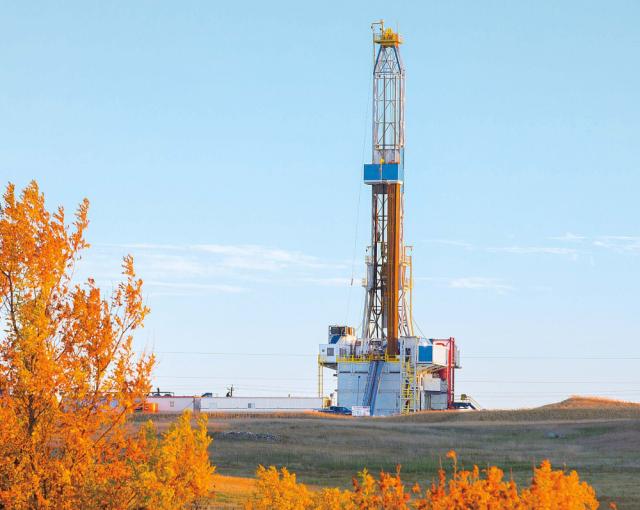
Hess Corp. is embracing plug-and-perf completions in the Bakken as it moves away from sliding sleeve. (Source: Hess Corp.)
Executives for Hess Corp. (NYSE: HES) say its shift to a new completion design in the Bakken is increasing NPV by about $1 billion at $60 per barrel WTI, with room to grow.
The New York-based company is embracing plug-and-perf completions as it moves away from sliding sleeve in the Bakken, where the lean manufacturing process has helped bring down costs by 60%.
“Those new plug and perf completions are generating about a 15%-20% improvement in average IP 180 performance over sliding sleeve,” Greg Hill, president and COO for Hess, said during the company’s recent analysts day. “This new design now is yielding well IRRs in excess of 50% over the next 15 years or 60 rig years of inventory…and that is highly competitive with the Permian.”
Hess anticipates the completions design will help grow its Bakken production to about 200,000 barrels of oil equivalent per day (boe/d) by 2021, higher than the previously guided 175,000 boe/d. The shale acreage, considered one of the company’s growth engines, is expected to generate more than $1 billion in annual free cash flow starting in 2021.
The Bakken remains one of the highest oil-producing shale play regions in the United States. Trailing only the Permian, Bakken oil production is estimated to grow by 18,000 bbl/d to about 1.46 MMbbl/d in January 2019, according to the U.S. Energy Information Administration’s latest drilling productivity report.
Hess began in 2017 piloting limited entry plug-and-perf completions when its sliding sleeve system reached its practical limits. A study conducted by Deloitte and Tudor, Pickering, Holt & Co. is providing the basis for the move, explained Barry Biggs, vice president, onshore for Hess.
“They divided up in the fields in the areas that we operate, roughly 10,000 wells in the basin, segregated them by completion type, developed a view on DSU [drilling spacing unit] value by us and by our peers and then benchmarked us on a cost basis,” Biggs said.
Results of the study gave Hess the confidence it needed to move to plug-and-perf completions, which the company plans to fully transition into in 2019.
The Bakken study results showed the company’s lean execution methods were driving down drilling and completions costs per well, which dropped from $11.4 million in 2010-2011 to $4.5 million in 2017. The results also confirmed the company was using the right spacing designs at the right time, Biggs said, noting Hess starts out with tighter spacing.
“We are moving out of this 60-stage, 8-10 million pound sliding sleeve to a plug and perf,” Biggs said. A “36-stage plug-and-perf will be what we’ll call a standard design, but we will be looking and testing in multiple locations different completion designs moving forward.”
Predictive analytics also suggested that plug-and-perfs were the way to go in the Bakken, according to Hess executives.
The company has a massive resource base in the Bakken with more than 3,000 gross operated locations remaining and over 2 billion boe yet to be produced, said Mike Turner, senior vice president of production, for Hess. He noted that doesn’t include the EOR upside such as refracs.
Hess focuses on maximizing NPV per DSU through its database of more than 2,400 wells that contain operating and cost data, Turner said.
“Extensive use of big data and predictive analytics allows us to use this information to optimize well spacing, proppant loading and stage counts to maximize NPVs and returns at each of our individual DSUs,” Turner said. “In 2019 we plan to transition to plug-and-perf completions fully and operate six rigs and three pressure pumping crews.”
The company expects to increase production in the Bakken to between 135,000 and 145,000 boe/d in 2019, compared to between 115,000 boe/d to120,000 boe/d this year. By 2021, Hess anticipates Bakken production will rise to 200,000 boe/d.
Velda Addison can be reached at vaddison@hartenergy.com.

